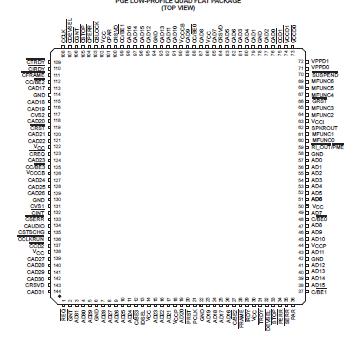PCI1410: Features: • Ability to wake from D3hot and D3cold• Fully compatible with the Intel 430TX (Mobile Triton II) chipset• A 144-terminal low-profile QFP (PGE), 144-terminal MicroStar BG...
floor Price/Ceiling Price
- Part Number:
- PCI1410
- Supply Ability:
- 5000
Price Break
- Qty
- 1~5000
- Unit Price
- Negotiable
- Processing time
- 15 Days
SeekIC Buyer Protection PLUS - newly updated for 2013!
- Escrow Protection.
- Guaranteed refunds.
- Secure payments.
- Learn more >>
Month Sales
268 Transactions
Payment Methods
All payment methods are secure and covered by SeekIC Buyer Protection PLUS.

 PCI1410 Data Sheet
PCI1410 Data Sheet







